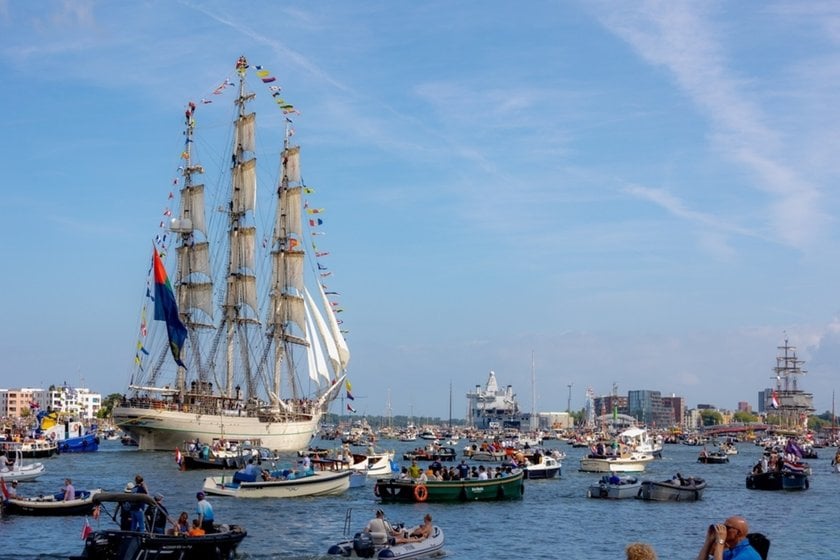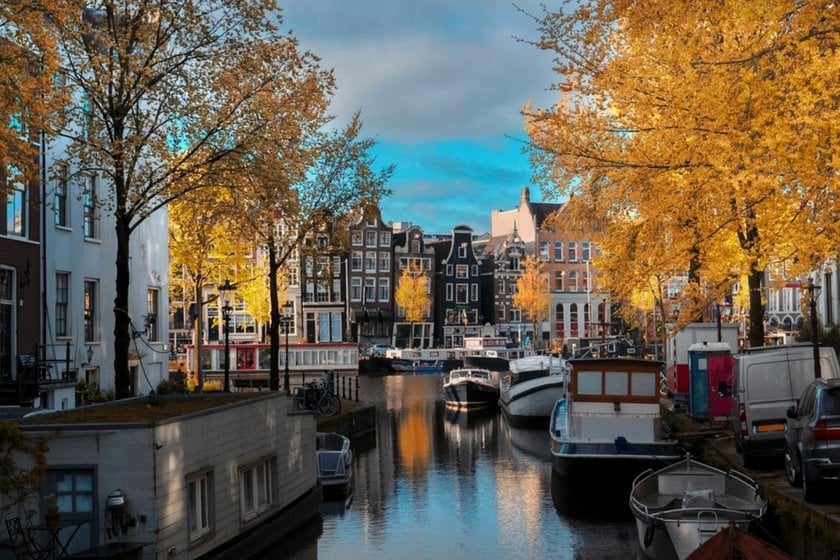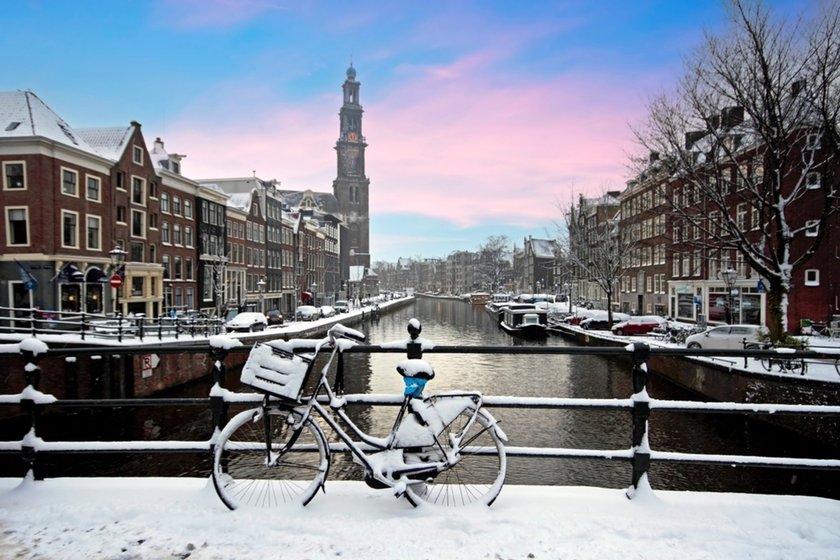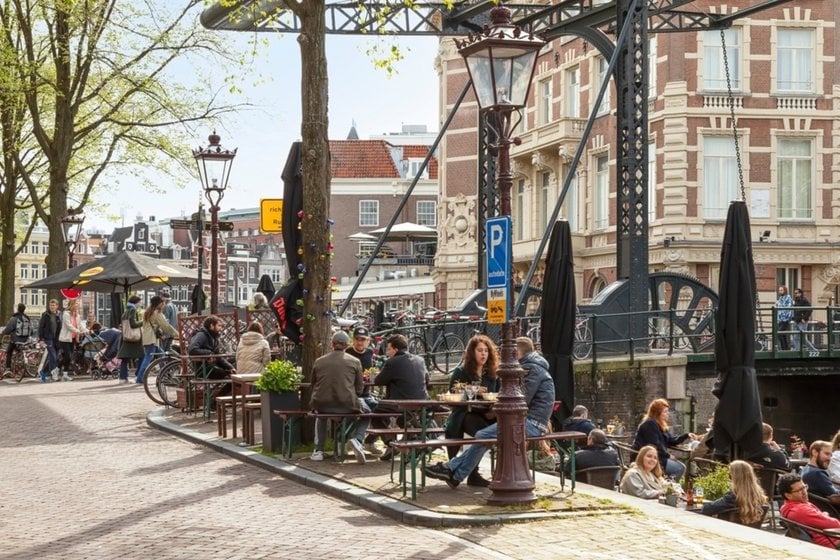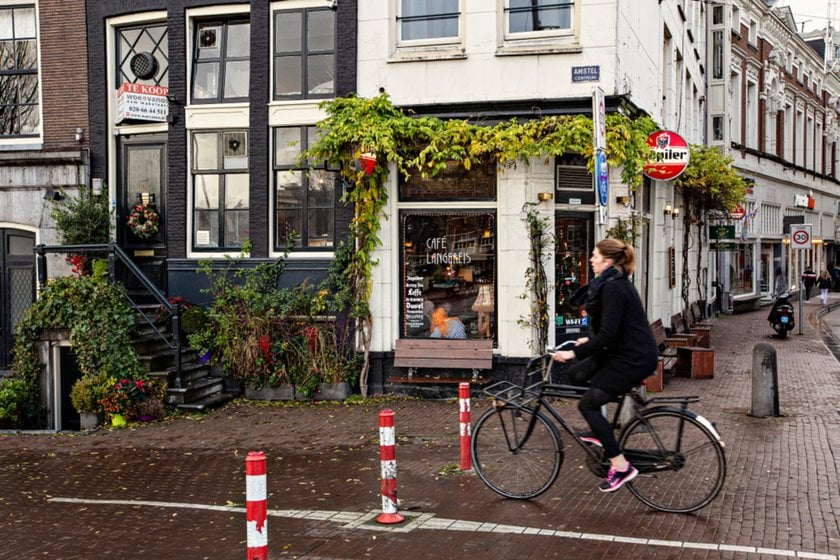Amsterdam Photography: Best Photo Spots and Tips
Last Updated on September 19, 2025

Plan your Amsterdam photography walk: best photo spots, shooting tips, and tricks to capture the city’s unique atmosphere day or night.
Amsterdam is one of those cities that seems made for photography. Canals catch the light, seventeenth-century façades lean gracefully over the water, and bicycles frame almost every corner. With so much character, even casual snaps can feel special — but with a little planning, they can become images worth printing and sharing.
In this guide, we’ll explore the most dependable Amsterdam photo spots, from iconic canal views to quieter streets full of atmosphere. Along the way you’ll find practical tips on composition, light, and timing, plus quick fixes for common problems like dull skies or soft focus. Whether you’re here with family or chasing portfolio shots, this walk-through will help you return home with a calm, coherent story of the city in pictures.
Iconic Canals and Bridges
Amsterdam’s canals and bridges are the city’s most recognizable photo subjects, offering elegant curves, reflections, and timeless architecture. For the best results, shoot at sunrise when the water is calm and mirror-like. Bring a tripod and experiment with long exposures to capture both stillness and light trails, while using bridges as natural leading lines in your composition.
1. Magere Brug (Skinny Bridge)
It is a drawbridge in the city built in 1934, and it is one of the most photogenic. Its attractive design is quite beautiful, particularly at night due to the special lighting. To capture the perfect shot, stand on the other side of the embankment — this will provide you with a mirror image of the water. Wide-angle shots can be captured with a wide-angle lens, and close-up shots of architectural elements can be achieved with the assistance of a telephoto lens.
2. Bloemgracht Canal
This waterway is also called the Flower Canal and is a more peaceful location, rather than the principal tourist routes. The water and color contrast with the bright facades of 17th-century houses is beautiful. The low-angle shots will focus on the building and reflections in the canal. During the day, you can take great images with locals and bicycle riders, adding vibrant movement to your pictures.
Famous Landmarks and Architecture
Amsterdam’s architecture is as striking as its canals, spanning Gothic churches, Renaissance façades, and bold modern landmarks. Some of the best photo spots in Amsterdam highlight these details — carved pediments, shop signs, and ornate doorways that give each frame character. Use light and shadow to emphasize textures and keep compositions clean for timeless shots.
3. Rijksmuseum
The National Museum of the Netherlands is an artistic treasure and an architectural masterpiece. Its neo-Gothic structure and richly decorated facades suit clean, symmetrical compositions. Face the central entrance and place the arch low in the frame to create a natural frame. On calm days, add the canal for a mirror-like reflection; at blue hour, the building takes on a storybook glow.
4. Amsterdam Central Station
A model of the wonderful Neo-Renaissance architecture is the city's central railway station. It boasts a wonderful skyline appearance, featuring brick buildings and clock towers. Shoot on the other side of the IJ canal in such a way that the whole size of the structure is captured. The use of panoramic shots effectively showcases the building's greatness. The interior walls are also arched, and this renders our architectural photography endlessly.
Hidden Gems and Unique Perspectives
There are true photographic treasures off the track. Those locations are more time-consuming to discover, yet they can offer you some otherworldly shots. Go through small streets, patios, and the edge of smaller canals. Here, you will experience the true life of the city without embellishment.
5. Begijnhof Courtyard
Among these hidden doorways is one that opens into a quiet 14th-century courtyard in a city center, through a discreet door. The feeling of time-traveling is created by wooden house facades and the perfectly manicured lawns of the houses. Shoot in the early morning, when the yard is quiet and the sun's light is diffused through the buildings in gentle light. Use the natural frames of arches and window openings in your composition. 
6. Hortus Botanicus Greenhouses
The oldest botanical garden was established in the 19th century. The interaction of light through the glass roofs forms beautiful patterns. Macrophotography offers the opportunity to capture the textures of tropical leaves and water droplets on glass. Shoot in low light with a tripod, and later use noise reducing software to clean up high-ISO grain while preserving delicate details.
Classic Dutch Windmills and Historic Locations
It is impossible to imagine Holland without windmills, and Amsterdam has several accessible windmill locations where one can take a picture of this national identity symbol. There are historic areas in the city that preserve the influence of the many centuries that have passed. In the event of such shots, the direction of the wind is another consideration, as this is what drives the mill blades. Wide-angle lenses will help capture the sizes of buildings in their natural settings.
7. De Gooyer Windmill
The single windmill that still remains on the ground of the city of Amsterdam is above the houses. The contrast between the modern structure and the wooden one is peculiar, making the establishment a unique location for photo opportunities. Seize a branch on the farther side of the water in an attempt to get the whole image in the water. During the mornings, side lighting is offered, and it emphasizes the wood texture.
8. Ouderkerk aan de Amstel
A typical Dutch landscape in a village, or so a few kilometers away from the center. Willow trees and old-fashioned houses are framed on a wooden bridge across the Amstel River. The ideal spot to witness the sunrise and mist rising above the water. These are the cyclists and boats that add to classic pieces.
Modern and Urban Photography Spots
Amsterdam isn’t only about canals and history; it also has a modern edge that’s perfect for urban photography. Industrial zones, bold street art, and contemporary architecture create scenes full of contrast, offering great opportunities for dynamic street shots and creative compositions. If distractions creep into the frame, an AI background remover can help you simplify the image or achieve a clean, minimalistic look.
9. NDSM Wharf
An old shipyard has been transformed into a street art center, featuring large graffiti murals. The buildings and industrial cranes form a strong backdrop that enhances the background in portrait photography. The art objects are showcased through drone shots to convey their magnitude. A flea market makes the scene bright and alive on weekends.
10. De Hallen Amsterdam
The depots of the trams were converted into a cultural center featuring restaurants and boutique shops. The Glass roofs and the structures of the industries provide fascinating lighting effects. Capturing the local spirit of trendy sightseers in architectural ornament. The evening light turns the place into a maze of light and shadows.
Best Time to Visit Amsterdam for Photography
Amsterdam offers a different mood in every season, making it a year-round destination for photographers. In spring (April-May), tulip gardens and flowering parks explode with color, adding vibrant accents to canal scenes. Summer (June-August) brings long days and soft golden evenings — perfect for relaxed shoots — though you’ll want to rise early to catch landmarks before the tourist crowds arrive.
Autumn (September-October) wraps the city in warm tones, with mist drifting over the canals on foggy mornings and adding atmosphere to everyday street views. In winter (November-February), the days are shorter, but the light is often more dramatic: glowing sunsets reflect on the water, and crisp air sharpens the city’s architectural lines. Whatever the season, Amsterdam always offers new stories for your camera.
Photography Tips for Capturing Amsterdam’s Beauty
Amsterdam’s light shifts quickly — from sharp sun on the canals to diffused rainlight in narrow alleys. The trick is less about finding the perfect Amsterdam photo spots and more about learning to use this light to your advantage. Local cyclists and passersby add life to frames, while the right camera settings help preserve the city’s unique mood.
Tip 1: Master Camera Settings for Any Light
 Light in Amsterdam shifts fast — bright sun on open canals, deep shade in narrow alleys. For buildings, use f/8-f/11. For moving cyclists, aim for 1/500 s or faster. Keep ISO low (100-400), raising it only when the light drops. Set white balance to Daylight or Cloudy to preserve warm tones.
Light in Amsterdam shifts fast — bright sun on open canals, deep shade in narrow alleys. For buildings, use f/8-f/11. For moving cyclists, aim for 1/500 s or faster. Keep ISO low (100-400), raising it only when the light drops. Set white balance to Daylight or Cloudy to preserve warm tones.
Tip 2: Use Reflections Creatively
 Amsterdam’s canals are perfect for reflection photography, especially in the calm mornings when the water is still. For maximum sharpness, place your camera on a tripod and use a remote shutter release. A polarizing filter will reduce glare and enrich color saturation, making the reflections more vivid. Photography Amsterdam from a low angle, close to the water’s surface, adds drama and depth to the scene. You can experiment with both symmetrical compositions for a mirror-like effect and asymmetrical framing for a more natural, dynamic look.
Amsterdam’s canals are perfect for reflection photography, especially in the calm mornings when the water is still. For maximum sharpness, place your camera on a tripod and use a remote shutter release. A polarizing filter will reduce glare and enrich color saturation, making the reflections more vivid. Photography Amsterdam from a low angle, close to the water’s surface, adds drama and depth to the scene. You can experiment with both symmetrical compositions for a mirror-like effect and asymmetrical framing for a more natural, dynamic look.
Tip 3: Golden Hour vs Blue Hour
 The golden hour, occurring just after sunrise and before sunset, bathes Amsterdam’s brick facades and canals in a warm glow, creating an inviting atmosphere for photography. In contrast, the blue hour — the period right after sunset and before sunrise — adds a cooler tone, with the soft blue light outside contrasting beautifully against the warm glow of illuminated windows. For golden hour, aperture priority mode helps balance exposure in changing light, while blue hour photography is best handled in manual mode with a tripod to keep shots sharp during longer exposures.
The golden hour, occurring just after sunrise and before sunset, bathes Amsterdam’s brick facades and canals in a warm glow, creating an inviting atmosphere for photography. In contrast, the blue hour — the period right after sunset and before sunrise — adds a cooler tone, with the soft blue light outside contrasting beautifully against the warm glow of illuminated windows. For golden hour, aperture priority mode helps balance exposure in changing light, while blue hour photography is best handled in manual mode with a tripod to keep shots sharp during longer exposures.
Tip 4: Capture the City’s Daily Life
Beyond the famous light of golden and blue hours, Amsterdam offers countless moments of everyday life worth photographing. Cyclists rushing across bridges, flower markets opening in the morning, or locals gathering in cozy cafés can bring authenticity to your shots. These scenes often unfold quickly, so keep your camera ready and work with faster shutter speeds to freeze motion. Later, subtle adjustments in the best photo editor can help refine colors, balance shadows, and highlight the atmosphere without losing the natural feel of the city.
Tip 5: Enhance in Post
 Thoughtful editing can transform Amsterdam photographs without making them look artificial. If you’re just starting out, a free photo editor for beginners is enough to practice the basics of exposure, color balance, and cropping — skills that bring out the charm of canal views, bike lanes, or museum interiors. Crowded locations often leave unwanted figures in the frame, and here a background-removal tool helps achieve a cleaner composition or even a minimalist style.
Thoughtful editing can transform Amsterdam photographs without making them look artificial. If you’re just starting out, a free photo editor for beginners is enough to practice the basics of exposure, color balance, and cropping — skills that bring out the charm of canal views, bike lanes, or museum interiors. Crowded locations often leave unwanted figures in the frame, and here a background-removal tool helps achieve a cleaner composition or even a minimalist style.
For indoor shots, apply gentle noise reduction to preserve fine details in low light. When working with reflections on the water and the architecture above, use layer masking to adjust each area separately: soften glare and highlights on the surface while deepening the mid-tones of brick facades. This approach keeps the image balanced and atmospheric.
Your AI-Powered Photo Editor for MacOS and Windows
Discover Now!Amsterdam Through Your Lens: Where Canals Pose and Cyclists Photobomb
In Amsterdam, certain conditions are particularly special for photography: canals with ideal reflections, Golden Age buildings, and unique lighting. Break early in the morning and beat the crowd. Have a polarizing filter to regulate glare on the water. Edit your images in Luminar Neo to create the mood. These will be the best shots you will ever remember of the city.


